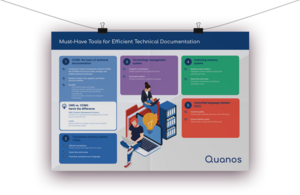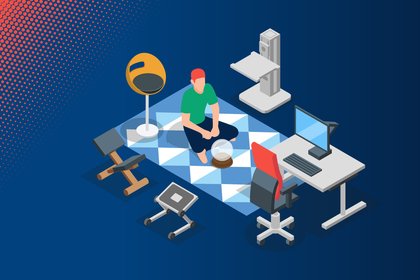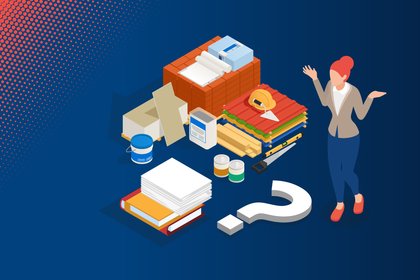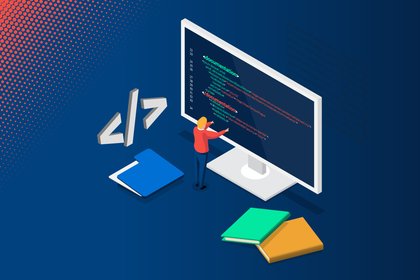Technical Writers Should Be Familiar With These Software Systems
A Content Management System saves a great deal of work when it comes to technical documentation. Complemented by systems for terminology, translations and proofreading, technical writers can also save time and improve the quality of their documents.

A Content Management System makes it easier for companies to create, manage and publish their technical documents. If it can communicate with translation service providers or access a terminology database, the technical writing system benefits from these extra functionalities. Below is an overview of the most important systems in the world of technical documentation.
CCMS: the heart of technical documentation
Component Content Management Systems (CCMS) such as SCHEMA ST4 work with content components or, in other words, with modular elements such as text modules, graphics, tables and photos. This means technical writers do not create an overall document for operating instructions, but rather each element is independent. At the end, all content is merged into a single document and laid out. These are referred to as Component Content Management Systems.
A CCMS offers the following benefits:
- Once it is created, the content can be output in various formats, for example as a PDF or HTML.
- The modules can be reused for a wide range of documents.
- Updates are very easy.
- Workflows can be determined, for example for the approval process.
- A CCMS makes collaborative work easier in technical documentation.
- Tasks can be automated.
- Translation management is made easier.
- A CCMS can be linked to other systems, meaning synergies are created and functionality is boosted.
Overall, it promotes efficient working in technical documentation and allows for a great deal of time to be saved.
CCMS or CMS? Here are the differences between them
Do you call an editorial system in technical documentation a Content Management System (CMS)? You wouldn’t be wrong to do so. A CMS is generally a software platform that is designed to create, edit and publish content for users. However, this usually refers to web CMS, in other words platforms that enable websites to be created and operated. The open source software WordPress is an example here. A Component Content Management System is a particular type of CMS. It is designed to treat content in a modular way and then bring it together for publication. This allows the system to handle the highly complex processes involved in technical documentation.
Other important systems in technical documentation
Translation memory system: efficiently managing translations
Translation memory systems (TMS) are mostly used by professional translators. They allow source and translated texts to be saved in a database. You can use this software to see whether text modules have already been translated, saving time and money. The software also promotes linguistic consistency.
You can link the Component Content Management System SCHEMA ST4 to translation systems. This allows you to automate the sharing of texts with your translation service provider, saving time and effort. You always have an overview of which texts have already been translated and which language variants are still missing.
Terminology management system: helps ensure linguistic consistency
You can define preferred terms to be used in your company or technical writing team using a terminology management system. Forbidden terms can also be set in this database. However, the terminology software is not just intended as a reference work for ensuring consistent corporate language. It can also be used to check documents that have been created. Several tools for terminology management are integrated in SCHEMA ST4. Specialized systems can be linked for more complex tasks.
Authoring memory system: write faster with author support
During the writing process, an authoring memory system shows a technical writer whether similar sentences or formulations have already been created in the CCMS in the past. The user can then copy the content created to their new text element at the click of a button in SCHEMA ST4. This function not only saves time during the writing process, but also helps to ensure linguistic consistency and reduces translation costs.
Controlled language checker: tracking down errors
Ideally, a text leaves the technical writing system completely free of errors. Controlled language checkers (CLC) are useful in order to assist technical writers during the quality control process. They check the following aspects:
- Style
- Formal specifications, for example sentence or paragraph lengths
- Spelling and grammar
- Terminology
If you use Microsoft Word as an editor in SCHEMA ST4, the Office spelling and grammar check is already included. Additional tools can be added using a plug-in. Furthermore, you can use SCHEMA ST4 to check individual text modules or your entire operating instructions for compliance with particular rules. Systems that are specialized in controlled language checking can be integrated for more comprehensive functionalities.
Conclusion: add-ons to a Component Content Management System are almost unlimited
Use of a Component Content Management System such as SCHEMA ST4 offers a range of benefits on its own because it offers many functionalities and boosts efficiency in technical documentation. Anyone who needs specialized systems above and beyond this, for example for managing translations, can link these, meaning that a Content Management System can be expanded according to your particular requirements. Furthermore, it may be helpful to network it with other systems that are used in the company, for example the product information management system. We go into this aspect in detail in another blog article.
Download our Poster!



